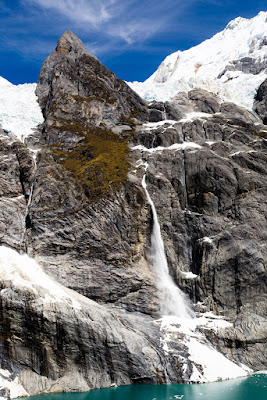 |
| Carolyn T. Arnold, Nara, Japan 1969 |
One day in Tokyo, my group was scheduled to go by train to Nikko, a mountain resort and national park. All were assembled in the hotel lobby and were casually visiting with one another. The transfer bus driver had reported early. I was relaxing while I waited for Mike, our Japanese guide. (Japanese guides always assume American names.) Suddenly, an uneasiness made me check my watch and I realized it was high time we were leaving. As I was going to the desk to inquire if there was a message from Mike, I was paged to answer the phone. It was Mike calling to tell me his taxi had been involved in an accident; he was being held as a witness. I told him there wasn’t any problem; I could take the group to Nikko, but he had the train tickets. What to do? We agreed that I should immediately “kidnap” one of the hotel bellboys to act as my interpreter, get my flock on the bus, and head for the station immediately. Mike would call the stationmaster, explain the situation, and after lunch in Nikko, he would join us. So off we went all alarmed about possibly missing the train and the day’s excursion.
We hopped on the bus, drove through the early morning traffic to the station. I led the group to the proper platform where we were stopped at the gate. There stood the train, and the large clock showed just five minutes for us to negotiate. I pushed the bellboy under the barrier and into the office to get an okay from the stationmaster for us to board the train. We all watched the clock. Four, three minutes until departure time and still no word from the office. Wildly gesturing I pointed to the clock, to my group, and to the train. Evidently, Mike’s call to the station had just come through. We had two minutes until departure when the stationmaster slowly rose from his chair, walked to where we waited, and personally escorted us to our coach, where he bowed and left us. Without any warning or fuss, promptly on the last minute, the train slowly moved out of the station as I collapsed in my seat. As Bob said later, “Now you know how to get twenty people on a train without tickets.” Mike met us at Nikko, and we continued with the scheduled sightseeing.
Nikko is a delightful place, ninety miles north of Tokyo. The scenery of mountains, lakes, and waterfalls is spectacular. The Toshogu Shrine is a Shinto shrine built in the 17th century. The Yomeiom Gate to the shrine is very elaborate, almost gaudy. It is awe-inspiring to walk along the long avenue approaching the gate between the towering cedar trees arched overhead. Before entering the Inner Court, we removed our shoes as is customary before entering anyone’s home or shrine. Here we were provided with cotton slippers, so ill-fitting that I felt like I was a web-footed duck.
To one side of the Yomeiom Gate is a five-storied pagoda dedicated to Buddism.
There is so much to see in Nikko. My groups always enjoy the bus ride from Nikko village to Lake Chuzenji at 1,000 feet elevation, at least until we start the uphill climb. Judging by the chorus of shrieks from the women on the bus, the ride is a real thriller. The narrow, twisting road has 47 hairpin turns as it rises sharply up the mountainside. The up-grade bus always has the right of way. Each switchback was numbered so we knew how many there were to go. This did not help the nervous ladies. At the parking place there are always “ohs” and “ahs” as we looked down at the twisting road over which we had come. The thought that we must return by the same road was not reassuring. Today the road to Chuzenji is one way as another approach has been built. However, there are still those sharp curves and breathtaking views below. Yes, I am glad we did not miss that train to Nikko.
Perhaps the original intrepid tourist was Carolyn Arnold, my husband’s aunt. A single school teacher in Des Moines, she began traveling abroad when she was in her forties, beginning with a bicycling trip through Ireland in 1950. She went on from there to spend a year as a Fulbright Exchange Teacher in Wales, to more trips to Europe and beyond, and eventually became a tour leader, taking all her nieces and nephews (including Art) on her travels. When she retired from teaching, she wrote of her experiences in a memoir called Up and Down and Around the World with Carrie. Today, as I read of her travels, I marvel at her spirit of adventure at a time when women did not have the independence they do today.

























